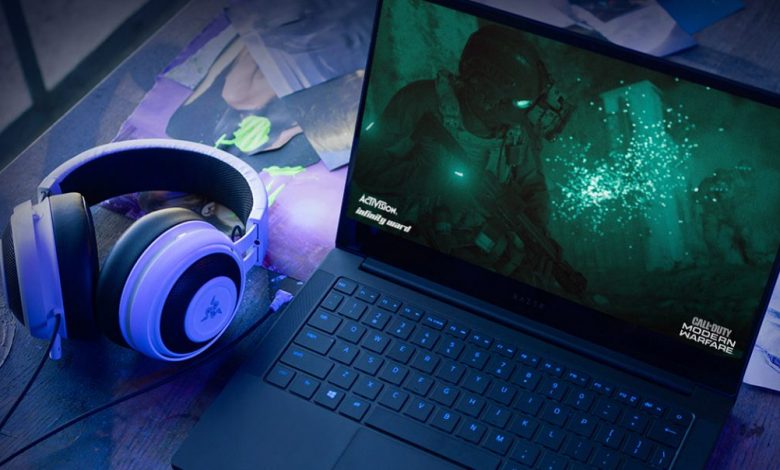Exploring the horizon: the latest technological advancements shaping the future of gaming

The gaming world has come a long way from the early days of the simplistic Space Invaders-style games that first caught the imagination of gamers in the 1970s and 1980s.
In the 2020s, those original gaming fans have grown up and gaming too has matured. It is a multibillion-dollar global industry and one of the fastest-growing and most essential parts of the entertainment sector, and leading gaming companies are involved in an ongoing and intense competition for their share of a $184 billion market.
Perhaps more so than any other part of the global economy, the gaming sector is built on technology, and gaming companies, from game console manufacturers to online casino operators, are always looking for new technological advancements that will give them the edge in the marketplace. As the pace of technological change is always accelerating, there are likely to be many more advances beyond the horizon. Here are just some of the ways in which technology is shaping the gaming world.
Virtual reality casinos
The online casino niche is one of the fastest-growing areas of the global gaming world, and liberalization of gaming markets combined with technological innovation has made it a highly competitive sector.
Much of the technological development in recent years has been directed at the production of player-friendly slot games, such as Jackpot 6000, which is a sophisticated, modern slot title presented with a retro style, but casino operators and developers are also actively exploring the potential of virtual reality (VR) casinos.

VR is not a new technology and is increasingly a feature of console and PC gaming, but the VR casino should have a particular appeal. Online casino players have made live casino gaming – in which real dealers host traditional casino games from special studios – increasingly popular, and VR casinos will offer the next level in player gaming experience, allowing game developers to create entire virtual casinos where players can interact with others while gaming.
AI non-playable characters
The non-playable character or NPC is a staple of the gaming world. The ability to interact with computer-controlled characters is a significant part of the player experience and helps to create a truly immersive world, but traditionally, NPCs have not always been that sophisticated.
The use of ‘behavior trees’ similar to that employed in games such as Halo 2 has enhanced the complexity and realism of NPC behavior, but they are still rooted in the programming of their developers. The next level in NPC development will be the use of genuine artificial intelligence (AI), allowing NPCs to become far more lifelike. The use of this technology in commercial gaming products is still some way off, but it has the potential to revolutionize the gaming experience.
Generative AI
AI is also likely to play an increasing role in the gameplay experience beyond NPCs. AI has already been widely employed to produce in-game features, as this means that developers don’t have to spend time on drawing individual assets such as trees or rocks.
Procedural content generation also employs AI to generate entire levels or parts of games. Perhaps the most impressive use of generative AI to date was in No Man’s Sky, in which new planets that each player visits are created entirely through AI.
In the future, generative AI is likely to become increasingly sophisticated, taking on more of the burden of content generation, freeing up designers to focus on other areas of a game, and making it possible for ever bigger gaming worlds to be created. This form of AI could also tailor the gaming experience to challenge individual player’s skills or to meet their preferences, perhaps generating entire new levels and even storylines.
High-fidelity graphics
The pursuit of more realistic graphics has been an ongoing theme in the gaming world and that graphical arms race is only likely to become more competitive over the next few years.
In the past, graphical features such as shadows or reflections were “painted on” to give the illusion of real-world lighting, but newer graphics cards produced by the likes of AMD and Nvidia are able to support “high-fidelity” graphics, which feature 3D images with multiple intersection points.
Ray tracing is also essential to this new world of slick graphics. Ray tracing, through a complex algorithm, can accurately simulate the effect of light on objects in the gaming world, freeing games designers to focus on other things, providing an immersive gaming experience that more closely matches the real world.
The metaverse
The concept of the metaverse has captured the imagination of game developers for many years, and that excitement is unabated despite the underwhelming and much-derided launch of the Facebook-linked project of the same name.
In fact, the metaverse is more than just a gaming phenomenon – it is essentially an online virtual realm where anyone can effectively live a parallel life through VR and AR technology. Some theories about the metaverse see it as developing its own economy. While that may be a way off yet, the metaverse is already a factor in the gaming world, in the way that games are developed to be more interactive.
Essentially, the metaverse has the potential to change the gaming experience as much as the games themselves. It could make it possible for players to play their favorite games, and interact and socialize with other gamers in a far more connected way, and given the ongoing popularity of multiplayer and interactive forms of gaming, this technology could have huge potential.
Conclusion
Technology has always been the essential driver of the gaming world and has enabled creative game developers to push back the frontiers of what we thought possible in gaming.
Thanks to evolving new technology such as AI, VR, AR, ray tracing and the metaverse, the future of gaming promises to be exciting and immersive, delivering a gaming experience that the arcade gamers of the late 1970s could only have dreamed about.
Read Next: How to Play Fortnite Split Screen on Any Platform



